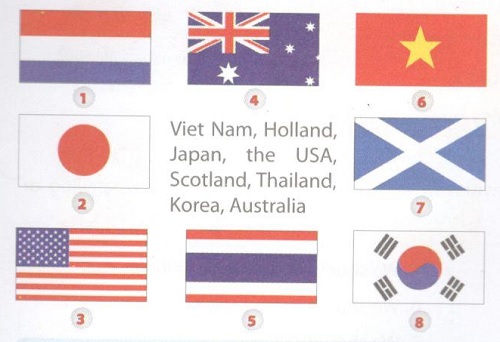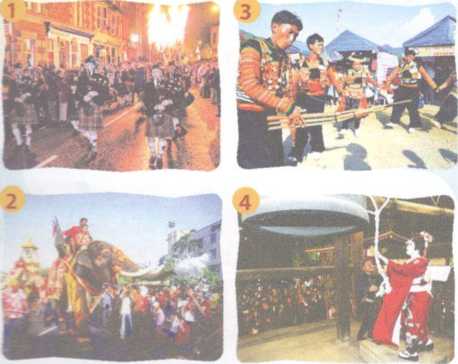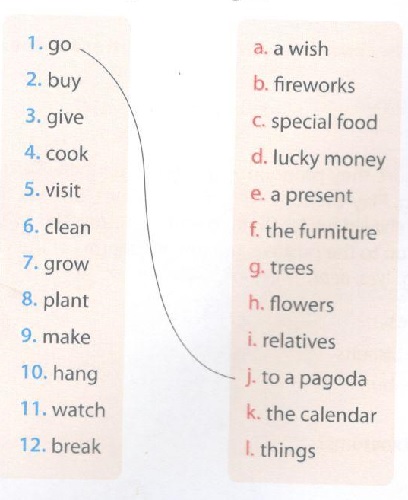I.
6.'' Look at that brush '' ,she said to her mother .''Isn't it one of...........?''
A.our's B.ours' C.ours D.our
Hãy nhập câu hỏi của bạn vào đây, nếu là tài khoản VIP, bạn sẽ được ưu tiên trả lời.

\(\sqrt{\left(6+\sqrt{6}+\sqrt{6}\right)}=\sqrt{\left(6+2,\left(4\right)+2,\left(4\right)\right)}=\sqrt{10,8}\)
Có: \(\sqrt{9}=3\)
Thấy 10,8 > 9 => \(\sqrt{10,8}>\sqrt{9}\)
Vậy: \(\sqrt{\left(6+\sqrt{6}+\sqrt{6}\right)}>3\)

Đáp án: A (hoành độ đỉnh là x = (-b)/2a = 6; tung độ đỉnh là y = (-Δ)/4a = 19).

47. I could read an English book at the age of 6.
A. When I did was 6, I could read an English book.
B. When I am 6, I could read an English book.
C. When I was 6 year-old, I could read an English book.
D. When I was 6 years old, I could read an English book.

a,(3+x)(x2-9)-(x-3)(x2+3x+9)
=(3x2-27+x3-9x)-(x3-27)
=3x2-27+x3-9x-x3+27
=3x2-9x
=3x(x-3)
b,(x+6)2-2x(x+6)+(x-6)(x+6)
=x2+12x+36-2x2-12x+x2-36
=0
a) \(\left(3+x\right)\left(x^2-9\right)-\left(x-3\right)\left(x^2+3x+9\right)\)
\(=\left(3x^2+x^3-27-9x\right)-\left(x^3-27\right)\)
\(=3x^2+x^3-27-9x-x^3+27\)
\(=3x^2-9x\)
b) \(\left(x+6\right)^2-2x\left(x+6\right)+\left(x-6\right)\left(x+6\right)\)
\(=\left(x^2+12x+36\right)-\left(2x^2+12x\right)+\left(x^2-36\right)\)
\(=x^2+12x+36-2x^2-12x+x^2-36\)
\(=0\)

\(\Leftrightarrow6^x\cdot\dfrac{1}{6}+6^x\cdot36=6^7\cdot217\)
\(\Leftrightarrow6^x=1679616\)
hay x=8

\(a.\sqrt{1+2\sqrt{2}+\sqrt{11+6\sqrt{2}}}=\sqrt{1+2\sqrt{2}+\sqrt{9+2.3\sqrt{2}+2}}=\sqrt{1+2\sqrt{2}+3+\sqrt{2}}=\sqrt{4+3\sqrt{2}}\)
\(b.\sqrt{10-2\sqrt{21}}+\sqrt{4+2\sqrt{3}}=\sqrt{7-2\sqrt{7}.\sqrt{3}+3}+\sqrt{3+2\sqrt{3}+1}=\sqrt{7}-\sqrt{3}+\sqrt{3}+1=\sqrt{7}+1\)
\(c.\sqrt{1+\dfrac{\sqrt{3}}{2}}+\sqrt{1-\dfrac{\sqrt{3}}{2}}=\sqrt{\dfrac{3}{4}+2.\dfrac{\sqrt{3}}{2}.\dfrac{1}{2}+\dfrac{1}{4}}+\sqrt{\dfrac{3}{4}-2.\dfrac{\sqrt{3}}{2}.\dfrac{1}{2}+\dfrac{1}{4}}=\dfrac{\sqrt{3}}{2}+\dfrac{1}{2}+\dfrac{\sqrt{3}}{2}-\dfrac{1}{2}=\sqrt{3}\)
\(d.\sqrt{15+6\sqrt{6}}-\sqrt{21-6\sqrt{6}}=\sqrt{9+2.3\sqrt{6}+6}-\sqrt{18-2.3\sqrt{2}.\sqrt{3}+3}=3+\sqrt{6}-3\sqrt{2}+\sqrt{3}=\sqrt{3}\left(\sqrt{3}+\sqrt{2}-\sqrt{6}+1\right)\)

1. Children in different countries are talking about their New Year. Read the passages.
Russ - the USA
I often go to Times Square with my parents to welcome the New Year. When the clock strikes midnight, colourful fireworks light up the sky. Everybody around is cheering and singing happily. I love that moment so much.
Wu - China
I love the first day of the New Year most. After getting up we dress beautifully and go to the main room. There my grandparents sit on a sofa. We bow and say our wishes to them.They will give us lucky money in red envelopes. After that, we go out and have a day full of fun, good food and laughter.
Mai - VietNam
I learnt some beliefs about Tet from my parents. At Tet people present rice to wish for enough food, red fruits for happiness. Dogs are lucky animals. Their barking sounds like 'gold'. But one shouldn't present a cat because its cry sounds like the Vietnamese word for poverty. Don't eat shrimps. They move backwards and you will not succeed in the New Year.
Hướng dẫn:
Russ - Hoa Kỳ
Tôi thường đi đến Quảng trường Thời đại với ba mẹ để chào đón năm mới. Khi đồng hồ điểm nửa đêm, pháo hoa đầy màu sắc chiếu sáng bầu trời. Mọi người xung quanh vui mừng và hát hò vui vẻ. Mình yêu thời điểm đó lắm.
Wu - Trung Quốc
Tôi yêu những ngày đầu năm mới nhất. Sau khi dậy sớm, chúng tôi mặc quần áo đẹp và đi đến phòng khách. Ớ đó ông bà chúng tôi ngồi trên ghế sô pha. Chúng tôi cúi đầu và nói điều ước của chúng tôi với ông bà. Ông bà sẽ cho chúng tôi tiền 11 xì trong phong bì màu đỏ. Sau đó, chúng tôi đi chơi và có một ngày vui trọn vẹn với dồ ăn ngon và đầy tiếng cười.
Mai - Việt Nam
Mình đã biết vài tín ngưỡng trong ngày Tết từ ba mẹ mình. Tết đến, người
ta tặng gạo để chúc và cầu cho thức ăn đầy đủ, tặng trái cây đỏ để chúc có
niềm vui. Chó là con vật may mắn. Tiếng chó sủa như “vàng”. Nhưng không
nên tặng mèo bởi vì tiếng kêu của nó giông như từ chỉ sự nghèo khổ trong
tiếng Việt. Đừng ăn tôm. Chúng bơi lùi và bạn sẽ không thành công trong năm mới.
2 Say who the following statements refer to. Number 1 is an example.
A. Russ B.Wu C.Mai
|
Statements |
Who |
|
1. A dog is a good present. |
c |
|
2. The child welcomes the New Year at Times Square. |
|
|
3. The child gets lucky money. |
|
|
4. Giving rice is wishing for enough food. |
|
|
5. The child dresses beautifully. |
|
|
6. One shouldn't eat shrimps at the New Year festival. |
|
|
Em hãy nói những câu sau để cập đến ai. Số 1 là ví dụ. A. Russ B.Wu C.Mai
|
3. Test your memory! Tick (√) the things which appear in the passages, and cross (X) the ones which don't.
a. lucky money
b.a day full of fun
c. a cat's cry
d. house decoration
e. fireworks
f. say wishes
g. cheering and singing
h.visit relatives
i. giving rice
j. Trafalgar Square
Hướng dẫn:
Kiểm tra trí nhớ của em. Đánh dấu chọn (√) vào những thứ xuất hiện trong đoạn vản trên và dấu chéo (x) những thứ không xuất hiện
a. lucky money (√) c. a cat’s cry (√)
e. fireworks (√)g. cheering and singing (√)
i. giving rice(√)
b. a day full of fun (√) d. house decoration (x) f. say wishes (√)
h. visit relatives (x) j. Trafagar square (x)
4 The following practices and beliefs are from
the passages in 1. Talk to your friends and say which one(s) you will do or won't do this New Year.
Examples:
1. Go to Times Square to welcome the New Year.
—► I won't go to the Time Square to welcome the New Year.
2. Have a time full of fun.
—> I will have a time full of fun.
Get lucky money from your grandparents.
Give your cousin a cat as a present.
Eat shrimps.
Cheer and sing when the clock strikes midnight.
Dress beautifully.
Watch fireworks.
Hướng dẫn:
Bài thực hành sau và những điều tín ngưỡng là từ đoạn ván ở phần 1. Nói cho bạn của em nghe em sẽ làm gì hoặc không làm gì trong năm mớỉ.
5 Work in groups
Write two popular beliefs you know about the New Year and tell your partners.
Belief 1.______________
Belief 2.______________
Hướng dẫn:
Làm việc theo nhóm. Viết hai điều tín ngưỡng phổ biến mà em biết vào năm mới và kể cho bạn bè nghe.
Tín nguỡng 1: Dogs are lucky animals. The barking sounds like “gold”.
Tín ngưỡng 2: You shouldn’t give cat as a present because its cry sounds like the Vietnamese word for poverty
6 Look at the list. Discuss with your friends what you should or shouldn't do at Tet.
|
play games all night |
get up early |
invite friends home |
|
buy some salt |
bring home a black cat |
ask for lucky money |
|
play music loud |
break things |
eat shrimps on New Year's Day |
Student A: We should make a wish.
Student B: I agree. But we shouldn't get up early.
Student C: No, we shouldn't. We should invite friends home, shouldn't we?
Student D: Yes, I think we should.
Hướng dẫn:Nhìn vào bang và thảo luận với bạn về những việc các em nên làm và không nên làm vào ngày Tết.

1 Match the flags with the countries. Then match the countries with their nationalities.
Japanese, American, Scottish, Vietnamese, Australian, Dutch, Thai, Korean

Hướng dẫn:
Nối những lá cờ với những quốc gia. Sau đó nối những quốc gia với quốc tịch của chúng.
1. Holland — Dutch (Hà Lan) 2. Japan — Japanese (Nhật Bản)
3. The USA — American (Hoa Kỳ) 4. Australia — Australian (úc)
5. Thailand - Thai (Thái Lan) 6. Vietnam - Vietnamese (Việt Nam)
7. Scotland — Scottish (Xcốt-len) 8. Korea — Korean (Hàn Quốc)
2 Game
Prepare pictures of flags. Walk around and meet people. Tell them where you are from. They will tell you your nationality.
Example:
A: Hi, I'm from England. A: I'm from America.
B: You're English. B: You're American.
Hướng dẫn:
Trò chơi
Chuẩn bị những bức tranh có hình lá cờ. Đi xung quanh và gặp mọi người. Sau đó nói cho họ bạn từ đâu đến. Họ sẽ nói cho bạn quốc tịch của bạn.
Ví dụ:
A: Chào, mình đến từ Anh Quốc.
B: Bạn là người Anh.
1) A: Hi, I’m from Holland.
B: You’re Dutch.
2) A: Hi, I’m from Japan.
B: You’re Japanese.
3) A: Hi, Fm from the USA.
B: You’re American.
4) A: Hi, I’m from Australia.
B: You’re Australian.
5) A: Hi, I’m from Thailand.
B: You’re Thai.
6) A: Hi, I’m from Vietnam.
B: You’re Vietnamese.
7) A: I’m from Scotland.
B: You’re Scottish.
8) A: Hi, I’m from Korea.
B: You’re Korean.
3 People in different countries celebrate New Year differently. Match the four groups of people with the pictures.
The H'Mong, Viet Nam
The Scottish, Scotland
The Japanese, Japan
The Thai, Thailand

Hướng dẫn:
Mọi người ở những quốc gia khác nhau ăn mừng năm mới theo những cách khác nhau. Nôi 4 nhóm người với bức tranh.
1 — The Scottish, Scotland. 2 — The Thai, Thailand 3 — The H’Mong, Vietnam 4 - The Japanese, Japan.
4. Read the four paragraphs below. Use the pictures in 3 to help you decide which group of people celebrates New Year that way.
| New Year | People |
| a. On New Year's Eve, each family kills a rooster. They take some red feathers from the rooster and stick them to the drawings of the Sun in their house. This will start the New Year. | |
|
b. Their New Year is in April, the hottest time of the year. One tradition is to throw water over people. They believe that this activity will bring a lot of rain in the New Year. |
|
|
c. At midnight on December 31, temples all over their country ring their bells 108 times. They believe that the ringing bells can remove their bad actions from the previous year. |
|
|
d. To welcome the New Year, they clean their houses. The first footer is very important. They believe that the first footer on New Year's Day decides the family's luck for the rest of the year. |
Hướng dẫn:
Đọc 4 đoạn văn bên dưới. Sử dụng những bức tranh trong phần 3 để giúp bạn quyết định nhóm người nào ăn mừng năm mới theo cách đó.
a. H’Mong (Người H’ Mông) b. Thai (người Thái).
c. Japanese (người Nhật Bản) d. Scottish (người Xcốt-len)
5 Find and check the meaning of some new words as they are used in the text by matching them with the definitions.
|
Text |
Word |
Definition |
|
a |
feathers |
the covers of a rooster, chicken or bird |
|
b |
rooster |
an adult male chicken |
|
c |
remove |
take away |
|
d |
first footer |
the first person to enter your home after new Year’s Eve |
Tìm và kiểm tra ý nghĩa của vài từ mới khi chúng được dùng trong ngữ cảnh bằng cách nôi chúng với các định nghĩa.
|
Text |
Word |
Definition |
|
a |
feathers (lông) |
the covers of a rooster, chicken or bird (lớp bao phủ bên ngoài của một con gà trống, gà, chim) |
|
b |
rooster (gà trông) |
an adult male chicken (một con gà giông đực dã trưởng thành) |
|
c |
remove (bỏ, xóa) |
take away (mang đi) |
|
d |
first footer (người xông đất) |
the first person to enter your home after newYear’s Eve (người đầu tiên đặt chân vào nhà bạn sau đêm Giao thừa) |
6. Group work
Each student chooses two facts from the four paragraphs he/she is most interested in. Write them down and take turns to read them aloud to his/her group. The group decides which group of people he/she is talking about.
Hướng dẫn:
Mỗi học sinh chọn 2 sự việc từ 4 đoạn văn mà anh ấy/cô ấy quan tâm nhất Viết chủng ra giấy và lần lượt đọc lớn cho nhóm nghe. Nhóm quyết định xem nhóm người nào mà anh ấy/cô ấy đang nói đến.
Xem thêm tại: http://loigiaihay.com/communication-trang-63-unit-6-sgk-tieng-anh-6-moi-c134a22133.html#ixzz50WS3JXuY

Bạn tham khảo ở đây nhé !
Looking back - trang 66 Unit 6 SGK tiếng anh 6 mới
1 Draw lines to match the actions on the left with the things on the right.

Hướng dẫn:
1 - j. go to a pagoda 2 - e. buy a present
3-d. give lucky money 4 - c. cook special food
5 - i. visit relatives
7 — h. grow flowers
9 — a. make a wish
11 — b. watch fireworks
6 - f. clean the furniture
8 - g. plant trees
10 - k. hang a calendar
12 - l. break things
2 Game: "About or Not about Tet?"
Five volunteers stand in front of the class. They take turns to read aloud each phrase from the list. The quickest student with the right answer gets one point for one right answer. The student with the highest score wins.
Hướng dẫn:
Trò chơi: “Nói về hoặc không nói về ngày Tết?
Nói về ngày Tết (About Tet)
Không nói về ngày Tết (Not about Tet)
Năm tình nguyện viên đứng phía trước lớp. Họ lần lượt đọc lớn mỗi cụm từ trong danh sách. Học sinh trả lời đúng nhanh nhất sẽ được 1 điểm. Học sinh cao điểm nhất sẽ thắng.
Ví dụ:
Tình nguyện viên A: chơi trò chơi (play games)
Học sinh A: nói về Tết (about Tet)
Tình nguyện viên B: đi bơi (go swimming)
Học sinh B: không nói về ngày Tết (not about Tet)
3 Phong is visiting Thailand at their New Year Festival. Look at the list of what he will or will not do. Then write out complete sentences.
Will
travel by plane
wear shorts and a T-shirt
get wet
throw water at others
watch the elephants
Won't
stay at home
eat banhchung
go to school
get lucky money
wait for the first footer
Hướng dẫn:
Phong đang đi thăm Thái Lan vào lễ hội đầu nảm mới của họ. Nhìn vào danh sách những gì anh ây sẽ làm và sẽ không làm. Sau đó viết ra những câu hoàn thiện
|
will |
won’t |
|
Phong will travel by plane. Phong will wear shorts and a T-shirt. Phong will get wet. Phong will throw water at others. Phong will watch the elephants. |
Phong won’t stay at home. Phong won’t eat banh chung. Phong won’t go to school. Phong won’t get lucky money. He won’t wait for the first footer. |
Phong thinks that children in Viet Nam (1)_____
visit their grandparents at Tet. They (2)_____
also wish them good health. To make their house
beautiful they (3)_____ help decorate it with
flowers and pictures. But children (4)_____eat
too much. They (5)_____ ask for lucky money,
either. One more thing: they (6)_____ make a
wish at Tet, too.
Hướng dẫn:
(1) should (2) should (3) should
(4) shouldn’t (5) shouldn’t (6) should
Phong nghĩ rằng trẻ em Việt Nam nên đến thăm ông bà vào ngày Tết. Chúng cũng nên chúc ông bà sức khỏe. Để làm cho nhà cửa sạch đẹp, chúng nên giúp trang trí nhà cửa với hoa và tranh ảnh. Nhưng chúng không nên ăn quá nhiều. Chúng cũng không nên đòi tiền lì xì. Một điều nữa là chúng nên ước một điều ước vào ngày Tết.
Tape script:
Tom: Phong, should children in Viet Nam visit their grandparents?
Phong: Yes, they should. And they should wish them good health.
Tom: Do they help decorate their house?
Phong: Of course. They should..
Tom: Do they eat much?
Phong: They do, but they shouldn’t. And they shouldn’t ask for lucky money, either.
Tom: Should they make a wish?
Phong: They should, I think.
5 Rearrange the words in each sentence to make New Year wishes and greetings.
Example:
I/good health and good luck/wish/you
I wish you good health and good luck.
Hướng dẫn:
Sắp xếp lại các từ trong mỗi câu để tạo thành lời chúc mừng năm mới
c.ours
'' Look at that brush '' ,she said to her mother .''Isn't it one of...........?''
A.our's B.ours' C.ours D.our